External links
Coordinates: 53°00′14″N1°13′19″W / 53.004°N 1.222°W
| This article about a Site of Special Scientific Interest in England is a stub. You can help Wikipedia by expanding it. |
Seller's Wood is a Site of Special Scientific Interest on the northern outskirts of Nottingham, England. There are several wildlife ponds within the site - formed out of old clay workings excavated by for use by local brickworks, long since closed. Entrance is from Sellers Wood Drive, Bulwell.
There is a circular walk of approximately 30 minutes with distant views and a view of the M1 motorway across farm fields from the northern edge.
Coordinates: 53°00′14″N1°13′19″W / 53.004°N 1.222°W
| This article about a Site of Special Scientific Interest in England is a stub. You can help Wikipedia by expanding it. |

Wood Quay is a riverside area of Dublin that was a site of Viking settlement. The site is bounded on the north side by Wood Quay on the River Liffey, on the west by Winetavern Street, on the south by John's Lane and on the east by Fishamble Street.

The Komoé River, or Comoé River. is a river in West Africa. The river originates on the Sikasso Plateau of Burkina Faso, flow through the Cascades de Karfiguéla, forms a short section of the border between Burkina Faso and Ivory Coast until it enters Ivory Coast, where it is the major drainage for northeastern portion of that country before emptying into the Atlantic. The banks of the Komoé are shaded by riparian forests along most of it length providing an important habitat for wildlife and a source of agricultural water. Where reliable floodplains form in Ivory Coast, rice may be grown. A portion of the river in northern Ivory Coast is the source of the vegetative richness that earned that area a UNESCO World Heritage Site designation, Comoé National Park.

Barnsdale, or Barnsdale Forest, is an area of South Yorkshire, England. The area falls within the Whitley Ward of the Wakefield Metropolitan Council. Barnsdale is historically part of the West Riding of Yorkshire. Barnsdale lies in the immediate vicinity north and north-west of Doncaster, and which was formerly forested and a place of royal hunts, and also renowned as a haunt of the outlaw Robin Hood in early ballads.

Judy Woods is a complex of woodlands in Bradford, West Yorkshire, England. Individual woodlands in the complex include Jagger Park Wood, Royds Hall Great Wood, Old Hanna Wood and Low Wood.
Shuswap Lake Marine Provincial Park is an 896-hectare provincial park in British Columbia, Canada, comprising 991 ha. The Park has a variety of amenities including boat launch ramps, picnic areas, and 27 campsites around the perimeter of Shuswap Lake. The lake's name and that of the surrounding Shuswap Country is from the Shuswap people (Secwepemc), the most northern of the Salishan speaking people.
The Borthwick Institute for Archives is the specialist archive service of the University of York, York, England. It is one of the biggest archive repositories outside London. The Borthwick was founded in 1953 as The Borthwick Institute of Historical Research. It was originally based at St Anthony's Hall, a fifteenth-century guild hall on Peaseholme Green, in central York. It is now based in a new, purpose-built building, situated adjacent to the J.B. Morrell Library on the University of York's Heslington campus. This new building was made possible due to a grant of £4.4 million by the Heritage Lottery Fund and designed by Leach Rhodes Walker and Buro Happold.
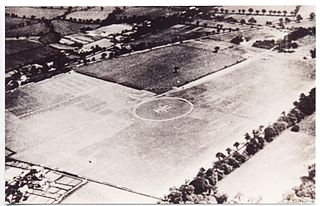
Manchester (Wythenshawe) Aerodrome also known locally as Rackhouse Aerodrome was the first airfield built to serve, temporarily, as Manchester's municipal aerodrome.

Maplehurst Wood is a 31.6-hectare (78-acre) biological Site of Special Scientific Interest on the northern outskirts of Hastings in East Sussex.
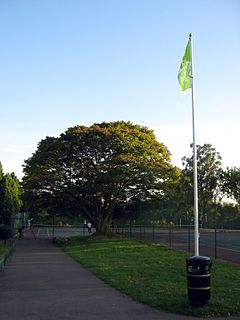
Hendon Park is a 12 hectare London suburban park situated 7 miles (11 km) north west of Charing Cross. It borders the Northern line, and Hendon Park and Northern line Railway Cutting are a Site of Local Importance for Nature Conservation.

Peace Point 222 is an Indian reserve of the Mikisew Cree First Nation in Alberta, located within Improvement District No. 24.
Woodhouses hill fort is an Iron Age hillfort between Frodsham and Helsby in Cheshire, England. It lies at the northern end of the Mid Cheshire Ridge. Woodhouse Hill has steep cliffs on the western sides, providing a natural defence. It is defended by a rampart to the north and east where the ground slopes more gently. Excavations in 1951 showed that the rampart was originally 4m high and revetted with stone on both sides. A number of small rounded stones, believed to be slingstones, have been found on the site. The hill fort is protected as a Scheduled Ancient Monument.
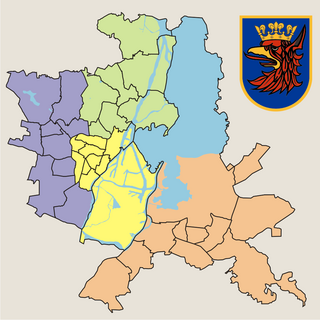
Północ is one of four districts of Szczecin, Poland situated in northern part of the city. As of January 2011 it had a population of 54,004.

Combs Wood is a 15.1 hectare biological Site of Special Scientific Interest on the southern outskirts of Stowmarket in Suffolk. It is owned and managed by the Suffolk Wildlife Trust.
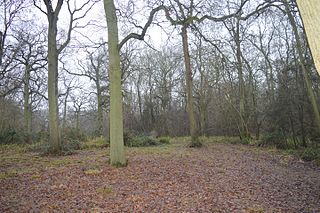
Perry Woods is a 67.9 hectare biological Site of Special Scientific Interest south-east of Kimbolton in Cambridgeshire. It is composed of three woods, the larger Perry West Wood and the smaller Perry Wood and Ash Wood.

Briery Wood Heronry is a 5.7 hectare biological Site of Special Scientific Interest in the grounds of Belvoir Castle in Leicestershire.
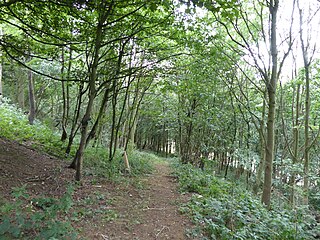
Harby Hill Wood is a 16.9 hectare biological Site of Special Scientific Interest west of Eastwell in Leicestershire.

Breedon Cloud Wood and Quarry is a 63.3 hectares biological and geological Site of Special Scientific Interest north-east of Worthington in Leicestershire. It is a Geological Conservation Review site. An area of 33 hectares is managed as a nature reserve by the Leicestershire and Rutland Wildlife Trust.

Glory Wood and Devil's Den is a 13-hectare (32-acre) nature reserve south-east of Dorking in Surrey. It is owned by Mole Valley District Council, and was managed by the Surrey Wildlife Trust until 1 April 2019. There is a bowl barrow dating to the Late Neolithic or Bronze Age in Glory Wood.

Blunts Wood and Paiges Meadow is a 28.9-hectare (71-acre) Local Nature Reserve in Haywards Heath in West Sussex. It is owned and managed by Mid Sussex District Council.

East Dean Park Wood is a 17.8-hectare (44-acre) biological Site of Special Scientific Interest south of East Dean in West Sussex.